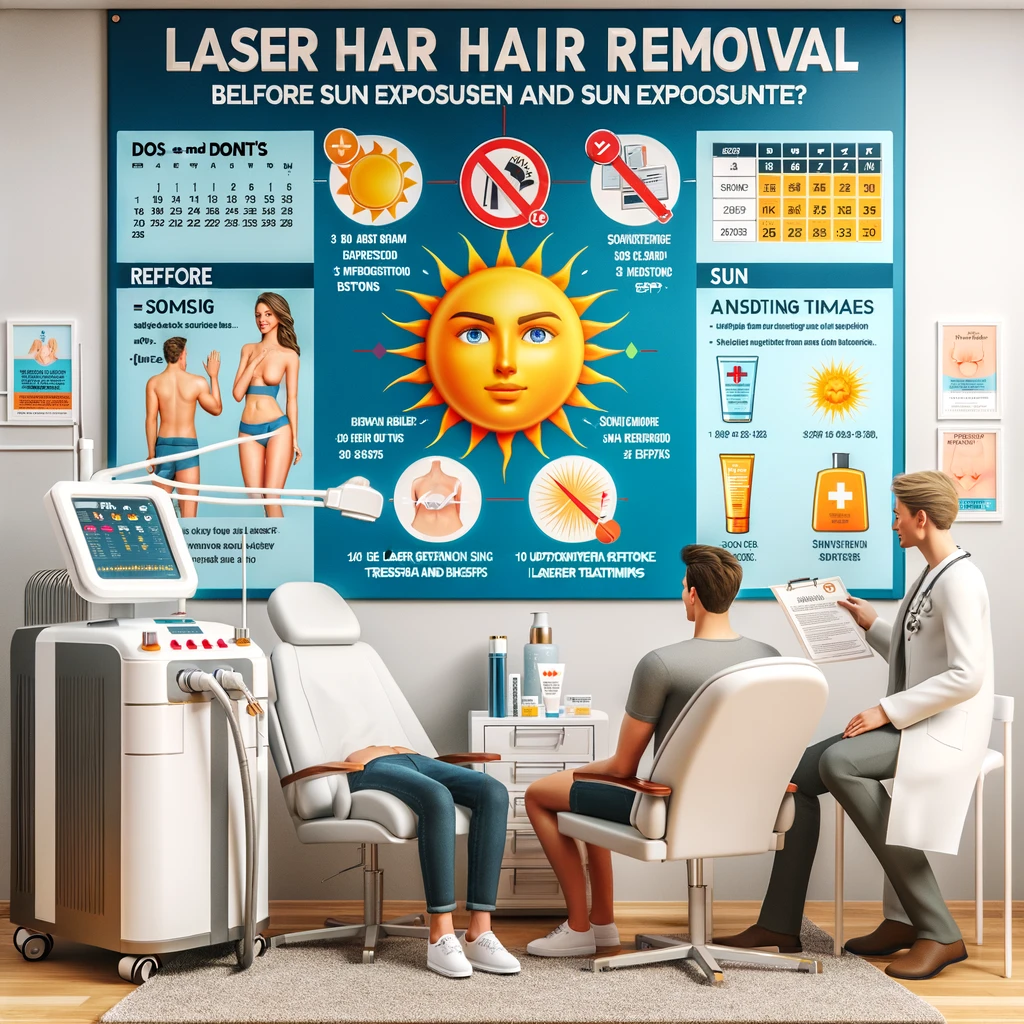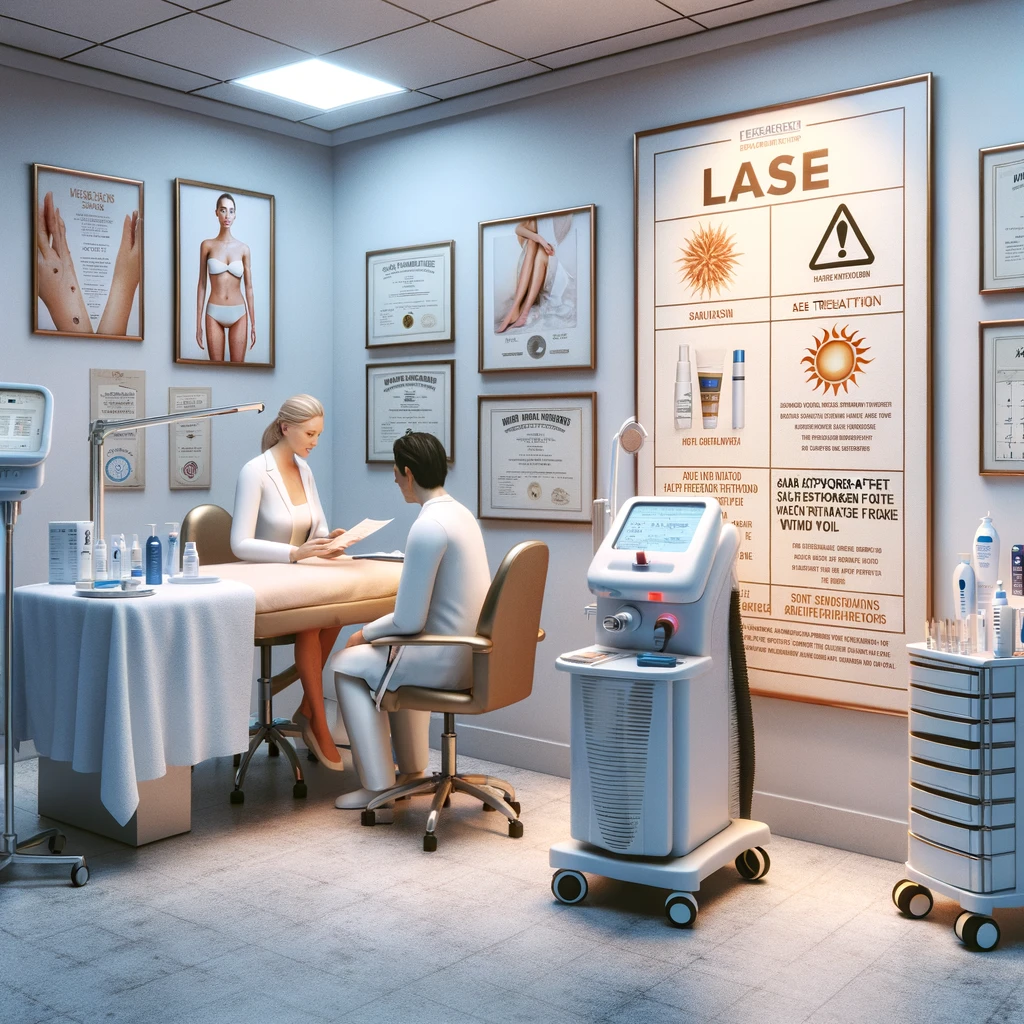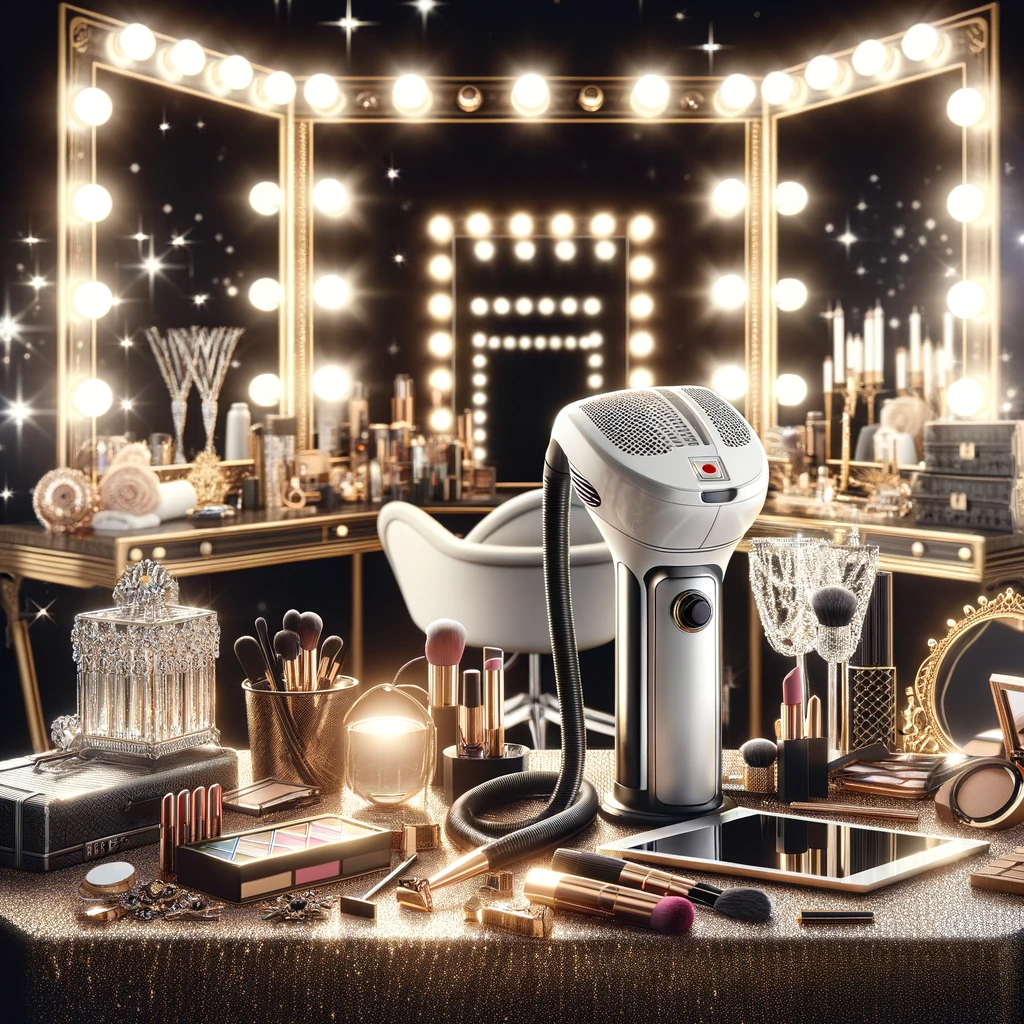Emily was excited about her upcoming beach vacation. She’d been diligently undergoing laser hair removal treatments for her bikini line and underarms, finally relishing the freedom from constant shaving. But with her tropical getaway approaching, a question lingered: could she relax poolside without sacrificing her smooth results? Was her newfound confidence at risk of fading along with a potential tan?
Understanding the relationship between laser hair removal and sun exposure is vital for anyone planning treatments, especially during warmer months. Let’s explore why timing is everything and how to enjoy the best of both worlds:
Why Sun Exposure Matters: Understanding Laser Technology
Laser hair removal functions by targeting melanin, the pigment in hair follicles. The laser’s energy converts to heat, which disables the follicle’s ability to produce new hair. However, the key is selectivity – the laser needs to “see” the contrast between the dark hair and the surrounding skin. Here’s where the sun comes in:
- Increased Melanin: When your skin is exposed to UV rays from the sun, your body produces more melanin as a natural defense. This tanning process means even your untreated skin becomes darker. The less contrast there is between your skin and hair, the less effective the laser becomes at targeting those specific follicles.
- Risk of Skin Sensitivity: Sun-exposed skin is more prone to sensitivity and irritation. Laser treatments performed on already-sensitive skin can increase the potential for side effects like burns, blistering, or changes in pigmentation (hyperpigmentation or hypopigmentation).
Playing it Safe: Pre-Treatment Sun Smarts
To maximize your laser hair removal results and ensure a safe experience, it’s crucial to minimize sun exposure to the treatment area before your sessions:
- The Two-Week Rule: Most experts recommend avoiding intentional sun exposure (tanning beds are a definite no-no) for at least two weeks before your laser treatment. If accidental sun exposure can’t be avoided, extra diligence with sunscreen is essential.
- SPF is Your BFF: Apply a broad-spectrum sunscreen with a minimum SPF of 30 to the treatment area daily, even on cloudy days. Re-apply regularly, especially if you’re outdoors for extended periods.
- Protective Clothing: Wide-brimmed hats, long-sleeved shirts, and pants can offer an extra layer of protection for your skin while out and about.
Post-Treatment Care: Prioritizing Skin Healing
Your skin continues to be sensitive after your laser hair removal treatment. Sun exposure during this time can further increase irritation and compromise your results:
- Avoidance is Key: Similar to the pre-treatment rule, stay out of direct sunlight for at least two weeks after your laser session. This lets your skin fully heal, reducing potential side effects.
- Diligent Sun Protection: If venturing outdoors is unavoidable, treat your skin like a sensitive baby – high SPF sunscreen, reapplication every few hours, loose-fitting clothing, and a trusty hat are your non-negotiables.
But What About My Vacation? Balancing Sun and Smoothness
If you have a sun-soaked trip planned, scheduling your laser treatments thoughtfully is key:
- Timing is Everything: Completing laser treatment cycles well before a vacation gives your skin plenty of time to recover and lets you enjoy the sun without worry. Conversely, avoid starting new treatments immediately before or during a trip.
- Maintenance Touch-Ups: If you’re partway through your laser sessions, consult your technician. Sometimes a maintenance session long after a vacation can target any regrowth without the sensitivity concerns of a full-blown treatment.
Open Communication: Your Laser Technician is Your Ally
Don’t hesitate to talk transparently with your laser technician about upcoming travel plans or unavoidable sun exposure. An expert can:
- Assess Your Skin: They’ll evaluate your current skin tone and any potential sensitivity.
- Adjust Treatment Settings: Lower laser energy settings may be necessary to reduce irritation risks while balancing effectiveness.
- Schedule Strategically: Help you plan your appointments so any post-treatment sensitivity has ample time to subside before sun-filled adventures.









Leave a comment